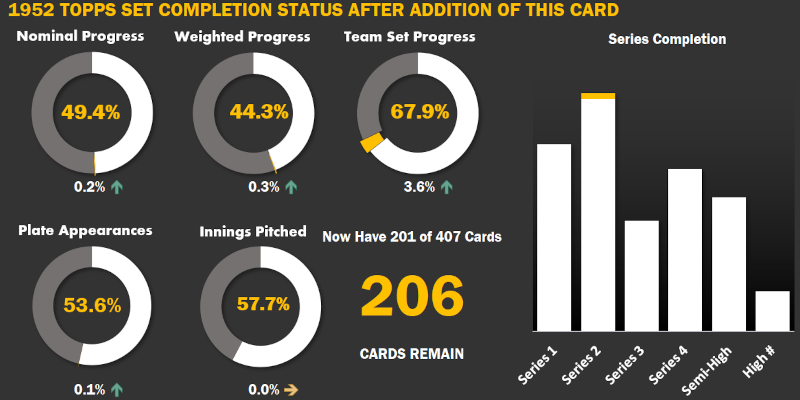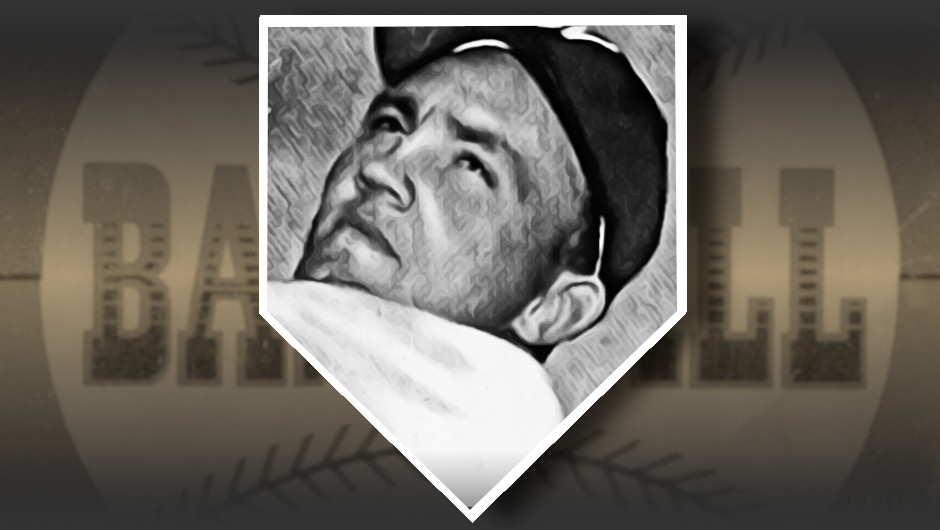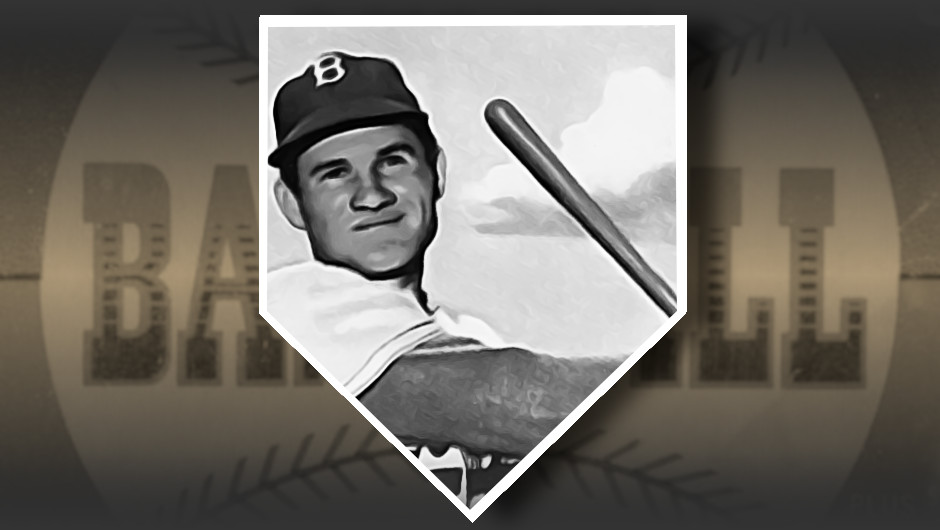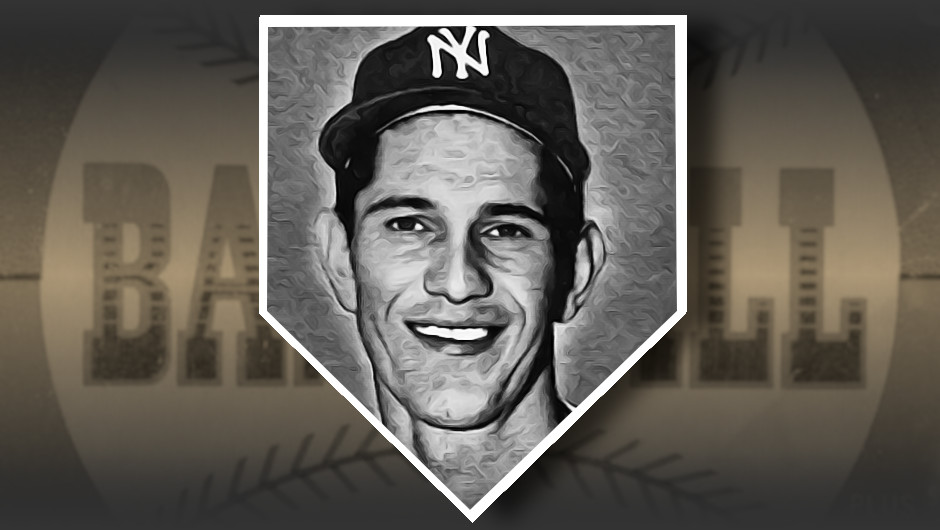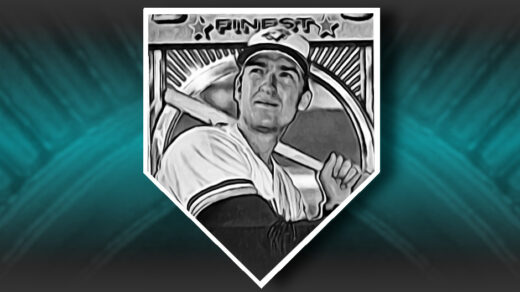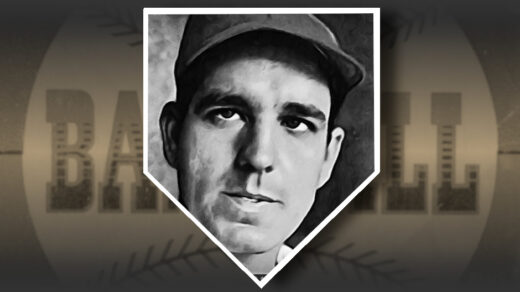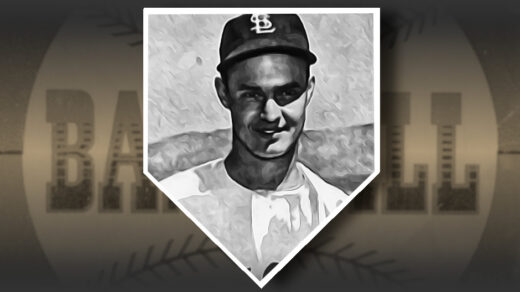Sy Berger and Woody Gelman knew exactly what they were doing when they laid out the checklist for Topps’ 1952 baseball cards. Superstars and teams were spaced out among the various series to keep collector interest high. Batters who broke up no-hitters were placed on the card next to the pitcher that had given them so much trouble in earlier in the game. Other games were afoot as well.
One bit of inside baseball hiding in the arrangement of card numbers was the back to back cards of Don Bollweg (#128) and Johnny Mize (#129). Mize was no stranger to baseball fans, beginning 1952 with the 6th highest all-time home run total and an abundance of World Series experience. However, Mize was nearing his 40th birthday and it was apparent that he would not be recreating his days as the leading slugger of the Cardinals and Giants. It was also clear that heir to Mize’s spot at first base would need to be someone good with a bat. Enter Don Bollweg.
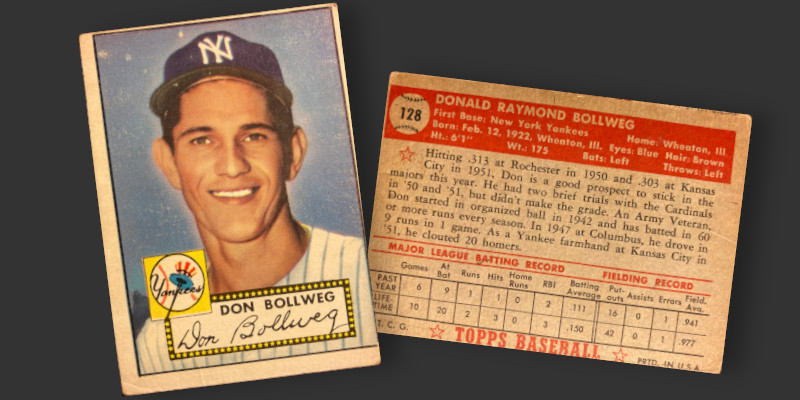
Don Bollweg was already pushing 30 years of age when the ’52 season began, but had made the most of the minor league assignments that followed his WWII Army discharge. He had 115 RBIs in his 1947 Class A season. Moving up the ranks, he hit above .300 in ’50 and ’51 while averaging ~20 HRs per season. This was enough for the Yankees, who acquired his contract and stowed him safely with their AAA affiliate in Kansas City. Bollweg performed well, winning the league MVP and finishing near the top of the leader boards in each of the triple crown categories.
The minor league accolades for a successful transition from Mize to Bollweg were in place. New York called up their new first baseman for the entirety of the 1953 season. Mize saw his usage reduced with Bollweg coming in as a replacement in many games. The rookie’s performance was solid (.297/.505/.887), despite only getting 34 actual starting assignments. Mize retired at the end of the season.
Despite the departure of The Big Cat, Bollweg’s future was not in New York. While he had been continuing his minor league performance in Mize’s shadow, a younger first base slugger with even more pop had replaced him in Kansas City. Moose Skowron was brought up for the 1954 season and promptly hit .340 for the season. Bollweg was traded to the newly transplanted Kansas City Athletics and produced a batting average more than 100 points lower. Next year’s numbers represented an even larger falling off and his career was over.
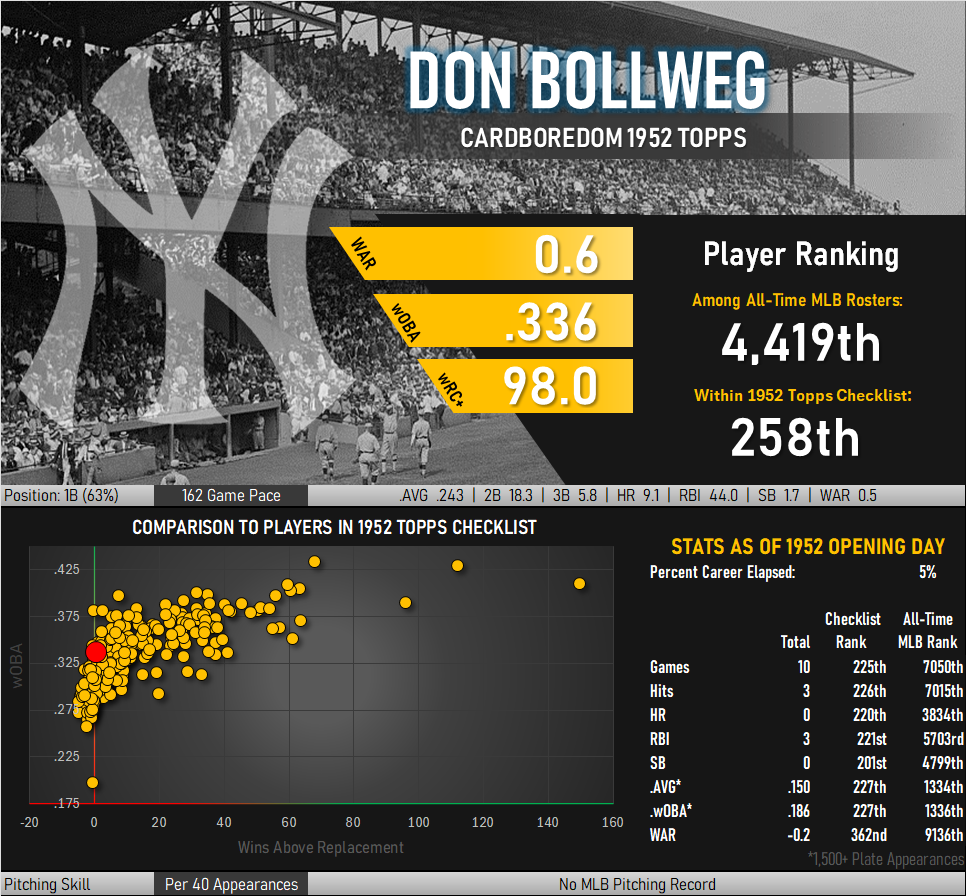
Bollweg’s MLB career spanned a total of 195 games. Of these, he garnered a starting lineup role in just 103 contests. Almost half his brief career was spent as a replacement, a title used in a promising tone throughout his minor league development.
